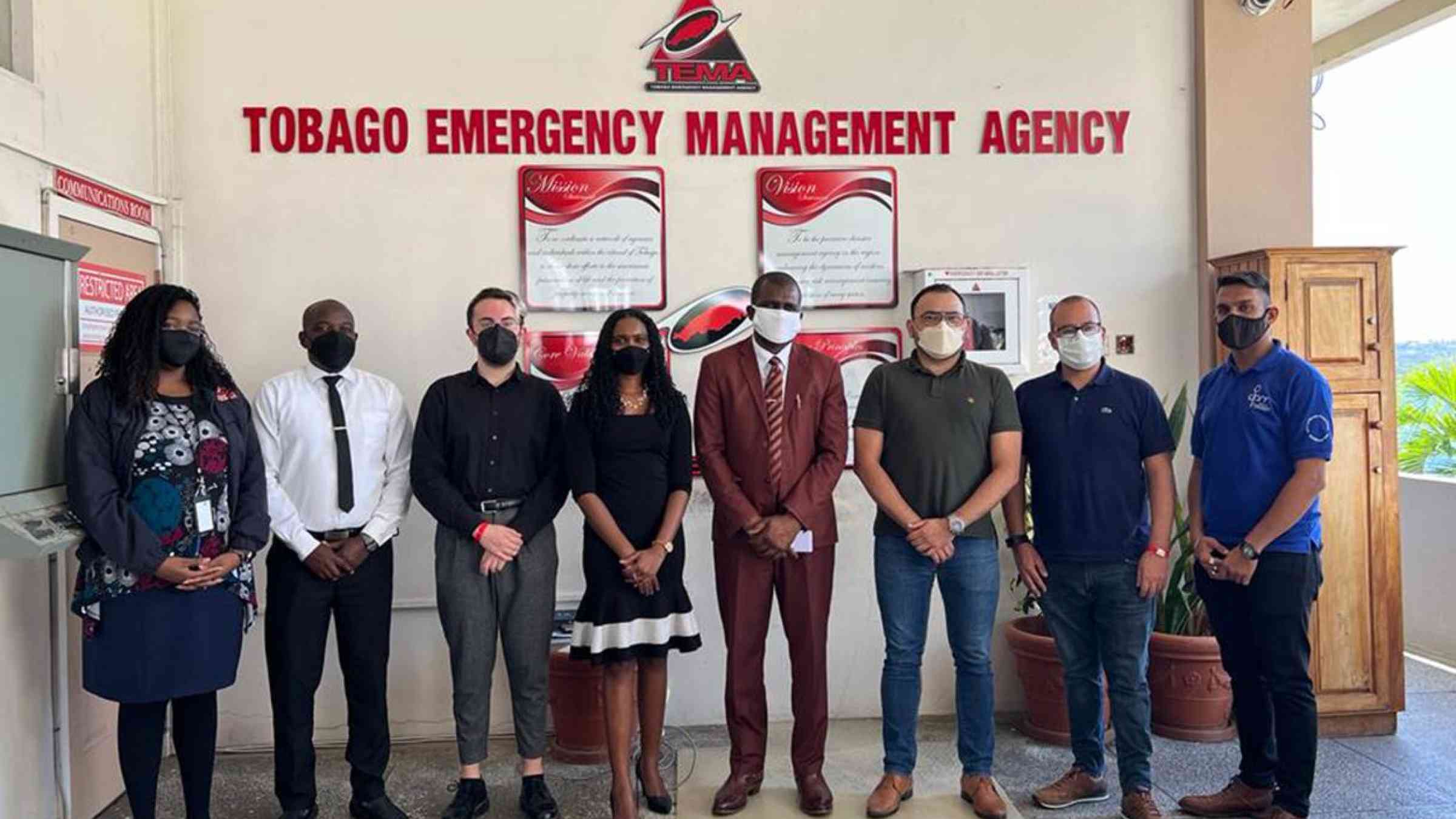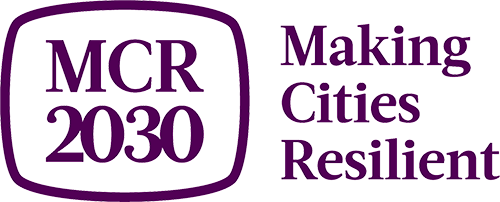Enhancing Tobago’s disaster preparedness via an all-of-society approach to local resilience planning

The island of Tobago, within the Republic of Trinidad and Tobago, has been steadily engaged on a path towards disaster preparedness. In the face of acute hydrometeorological risks, Tobago joined the MCR2030 initiative in May 2022, aiming to accelerate disaster resilience-building at the island level and lead the way for a more resilient Caribbean region.
An island facing growing disaster risks and challenges
Nestled within the southern part of the Atlantic Hurricane Belt, the island of Tobago is exposed to strong tropical storm hurricane winds, significant rainfall and flooding associated with tropical cyclone systems. Flooding and landslides are also common occurrences.
As recently as June 2022, the island, along with the rest of the country, was placed under a tropical storm warning for a weather disturbance yet to develop into a storm, which resulted in significant power outages, blocked roadways, fallen trees and a collapsed structure.
In parallel, Tobago presents high vulnerability factors, as it is estimated that 19% of the island’s population live in poverty. The island is also receiving a growing migrant population from neighboring Venezuela. This emerging issue presents new challenges for Tobago's development since these groups are often marginalized and can lack the necessary capacities to cope with disasters.
Climate change as a risk accelerator
The island’s main city and capital of Scarborough rests on its east coast, along with a significant portion of its economic activities. Tourism is the mainstay of Tobago’s economy, with most of the tourism industry located on the coasts. Climate change is therefore a major threat for the island’s economy and its development.
Climate change is expanding the island’s risk landscape, creating new and emerging risks, while also threatening development progress. For instance, in 2011, the Sargassum seaweed first showed in shorelines of the Caribbean. Since then, the proliferation of Sargassum seaweed has brought negative impacts to coastal communities, livelihoods, public health, tourism and fisheries.
The Sargassum invasion has been linked to climate change and ocean eutrophication and is expected to be a recurring problem1. In the same way, Tobago boasts of its large and diverse Buccoo Reef – a coral reef ecosystem that promotes ecotourism while also providing ecosystem services. However, the effects of climate change, coupled with direct human practices, continue to erode its majesty and the extent of services provided by the reef.
The current and future implications of climate change therefore mean eroded coastlines, damaged coral reefs, invasive species, more intense tropical cyclone systems, health hazards, and much more, all of which in turn create knock-on effects that undo and slow development progress.
Joining the MCR2030 initiative to accelerate resilience building actions
MCR2030 provides a unique opportunity for Tobago to advance its resilience efforts, especially on the heels of the COVID-19 pandemic. Tobago is an island authority. Therefore, in this instance, MCR2030 tools and methodologies serve the entire island, rather than just its main city.
Joining MCR2030 allowed Tobago to be the pioneer subnational government entity to sign on to the Initiative, allowing Tobago to serve as a pilot for other municipalities of Trinidad, and even the wider Caribbean.
Applying MCR2030’s methodologies was timely, occurring as the island, and wider country, is on its path to recovery of COVID-19, affording greater consideration to the principles of Building Back Better. MCR2030 has allowed Tobago to effectively identify its resilience capacities, as well as vulnerabilities and shortfalls in the context of evolving risk, to determine how best to tackle issues for improved resilience.
As an island of just over 60,000 persons, MCR2030 has enabled access to local and city governments across the world for shared practices, lessons and resources for improved resilience.
Multi-stakeholder approach to local resilience planning
For a period spanning four days in May 2022, a group of stakeholders across sectors and levels was convened to deploy MCR2030 tools for the island of Tobago, in particular the Disaster Resilience Scorecard and to pilot the Displacement Addendum to the Scorecard. The activities were conducted in a multi-stakeholder, participatory environment, including international development partners such as UNDP, ECLAC and WFP, as well as national and local partners.
The workshop provided an opportunity to enhance systemic risk planning efforts, while also providing a platform for enhanced networking, experience-sharing and collaboration for future activities. It brought together in one forum, international development partners, non-governmental organizations, national authorities, and local authorities, to map out the island’s existing capacities and gaps in support of targeted future actions.
The assessment informed the development of a DRR and Resilience Action Plan for the island of Tobago which presents the island’s aspirations for disaster risk reduction and resilience and provides a roadmap of concrete actions in pursuit of these aspirations, over a four-year period. The activities ensure coherence of the DRR and CCA agendas while also contributing to the island’s sustainable development priorities.
On a larger scale, applying the tools in Tobago, also provided a valuable learning opportunity for MCR2030, understanding how the tools can be best applied for Caribbean and similar SIDS contexts, with unique structures. The piloting of the Displacement Addendum in particular, has allowed for learnings to be captured in support of a more effective tool that adequately captures displacement contexts at the local level for improved planning and integration of displacement considerations.
Tobago´s next resilience priorities
In conducting the assessments and mapping out its action plan, Tobago has outlined six key strategic goals in support of resilience:
- Strengthened institutional and governance arrangements for disaster risk reduction and resilience
- Increased and sustained knowledge for disaster risk reduction and resilience
- Well-planned, resilient and durable infrastructure and systems
- Strong, inclusive communities
- Protected and sustainably leveraged natural assets and environment
- Enhanced disaster preparedness
Added to this, the island’s Disaster Risk Reduction and Resilience Action Plan is guided by the principles of partnership and all-of-society involvement in DRR for resilience.
How to move forward in building local resilience?
Like many SIDS and local governments, Tobago’s progress in achieving its resilience priorities is dependent on technical and financial support from partners to meet and sustain activities. Tobago stands to benefit tremendously from the application of nature-based solutions and green technologies, but technical capacities and initial capital investments are required to advance these actions.
Apart from the coral reef systems, Tobago’s Main Ridge Forest is often referred to as the “backbone” of the island, home to a wealth of flora and fauna and providing crucial ecosystem services. These available natural resources must be leveraged and enhanced for improved resilience.
DRR and climate financing remains a challenge for island economies like Tobago and while there has been increasing investment in risk reduction, there is still a need to balance between risk mitigation and adaptation and humanitarian funding from international development partners. Additionally, ICT support and improved technologies for risk mapping, current and future scenario modeling, and risk costing in the context of resilience benefits can aid in advancing the island’s efforts to achieve and sustain resilience.

